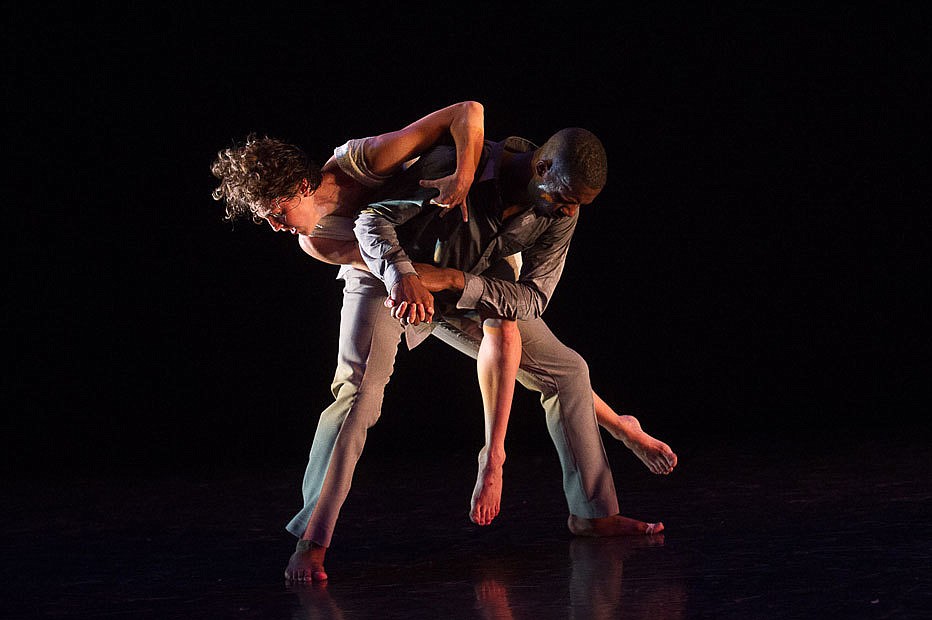- November 24, 2024
-
-
Loading

Loading

When Dwight Curry first read the subject line of the email announcing the lineup of the 2016 Ringling International Arts Festival, he wasn’t quite sure what to think.
“WARNING!” it read. “May Cause Excessive Joy and Laughter.”
As the curator of performances for the eighth annual performing arts festival, he admittedly had mixed feelings about the email’s lighthearted tone. Certainly an international arts festival is a more serious endeavor, he thought.
“You don’t normally associate a museum with something like that,” he says. “I was a bit unnerved at first.”
But the more he pondered the festival’s mission — and its lineup, which he spent the last year curating — the more accurate it seemed. Sure, the festival has its share of serious subject matter. And the caliber of the performances is world-class.
But there’s a lot of playfulness, too.
He points to one upcoming performance in particular: “The Pianist.” In it, New Zealand-based comic performer Thomas Monckton surprises audiences with a slapstick-style grand piano concert.
“At the beginning of the performance, Monckton walks out to sit down at this grand piano,” says Currie. “He’s dressed in a tuxedo, and there’s an ornate chandelier hanging above the piano. He immediately hits his head on the chandelier, and it’s all downhill from there. He’s playing with the idea of pretension. It’s good to do that — to laugh at ourselves and the sort of pretension that can come with art appreciation.”
Playing Matchmaker
For the last eight years, the Ringling International Arts Festival has brought some of the best performers from around the world to Sarasota for four days of music, dance, acrobatics and theater.
It’s a few weeks before opening night, when the festivities will kick off with an outdoor celebration in the museum’s courtyard. Currie is sitting in his office, looking over this year’s lineup, growing more excited as he describes each of the upcoming performances. He’s starting to feel a bit nervous. But he says that happens every year around this time.
He likens the whole curatorial process to that of playing matchmaker: He travels to the biggest festivals on the circuit — Jacob’s Pillow, Montréal Complètement Cirque and others — to keep up to date on the newest and most innovative performers in the industry.
The goal, he says, is to bring a diverse sampling of those performers to Sarasota, providing local arts enthusiasts an opportunity to see something they’d never be able to experience outside New York City or other urban centers.
He knows Sarasota will love the performers, and he’s excited to show them off. At the same time, he knows the performers will love Sarasota. But, like setting up two friends, a small voice in the back of his mind begs the question: What if they don’t?
“It’s sort of the pinnacle of anxiety,” says Currie with a laugh. “I fall in love with these acts, and I think they’re wonderful. We’ve been lucky to only have a few performances receive a less-than-favorable response.”
He recalls modern Japanese dance duo Eiko and Koma’s 2011 RIAF performance. He was enthralled with their work, and couldn’t wait to debut it at The Ringling.
“It’s good to do that — to laugh at ourselves and the sort of pretension that can come with art appreciation.”
— Dwight Currie, curator of performances
“I was so excited to have them here,” he says. “There was a raked stage, complete with a tapestry of grass and grains. And in the middle of it all were these two naked performers drumming and chanting. You could almost hear a collective gasp from the audience. But Eiko was thrilled. She loved the response.”
And for Currie, that’s the point. The festival isn’t about just taking the safe route. It’s about bringing a sampling of what’s out there and introducing it to a local audience — an audience he says people often underestimate.
“You hear people say things like, ‘Oh, this is great, but I’m not sure Sarasota is ready for this,’” he says. “If you believe a Sarasota audience won’t respond to anything created after 1896, you’re not giving them enough credit. We’re constantly moving forward and looking for new ideas. Sarasota is ready for anything.”
It’s also about bringing performance art to a visual art museum.
“This differs from other types of performance art, where maybe you have a script and you reinterpret it,” he says. “Museums don’t deal in re-creations — we deal in one-of-a-kind works. So the same criteria should be in place for performance art. These are one-of-a-kind works, straight from the hands of the creators. But where some of the art in our museum is more than 1,000 years old, this is a fleeting experience. You have to be there for it.”
The Right Balance
Unlike last year’s festival, which focused on Asian performance art in anticipation of the museum’s Center for Asian Art opening, this year’s schedule is less geographically organized. But the shows still share a narrative thread.
Choreographer Doug Elkins will return to the festival — the first encore performance in the festival’s history — to perform two works: “Hapless Bizarre” and “Mo(or)town/Redux.”
The former is an overtly comical, witty performance incorporating elements of slapstick, physical comedy and vaudevillian sensibilities. The latter, while more somber in tone, still contains its own elements of whimsy, reimagining Shakespeare’s “Othello” through classic Motown music. The resulting mash-up asks viewers to see both elements in a new light. (Picture Iago confronting Othello with the infamous handkerchief — a symbol of infidelity — set to the tune of “Heard it Through the Grapevine.”)
If you’re looking, says Elkins, thematic similarities will emerge, and that’s part of why he finds the festival such a unique one.
“They have a willingness to bring in what at first seems like divergent shows,” he says. “When you pull back, it’s almost like tiles in a mosaic. That’s not something you can see in a pamphlet.”